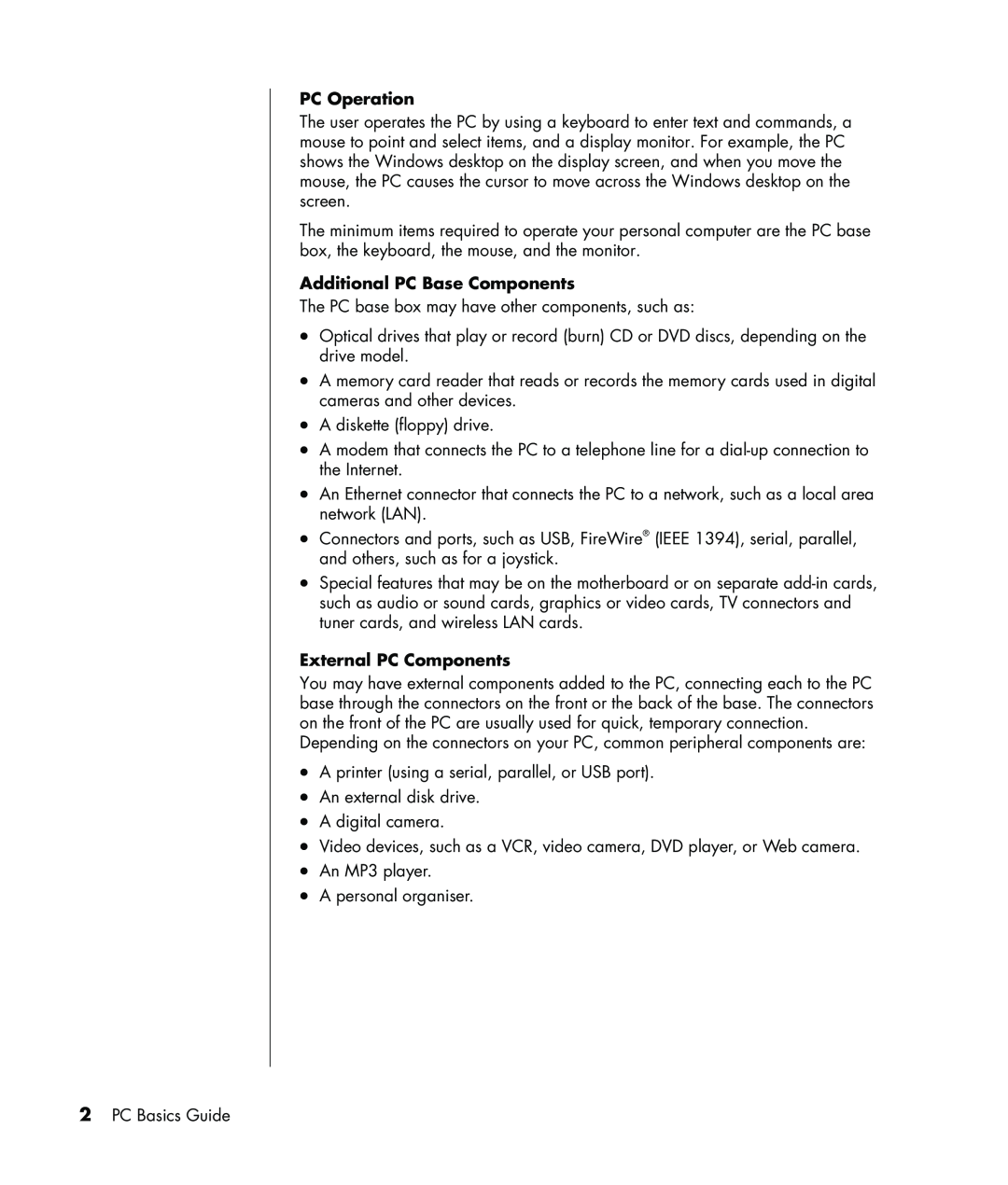PC Operation
The user operates the PC by using a keyboard to enter text and commands, a mouse to point and select items, and a display monitor. For example, the PC shows the Windows desktop on the display screen, and when you move the mouse, the PC causes the cursor to move across the Windows desktop on the screen.
The minimum items required to operate your personal computer are the PC base box, the keyboard, the mouse, and the monitor.
Additional PC Base Components
The PC base box may have other components, such as:
•Optical drives that play or record (burn) CD or DVD discs, depending on the drive model.
•A memory card reader that reads or records the memory cards used in digital cameras and other devices.
•A diskette (floppy) drive.
•A modem that connects the PC to a telephone line for a
•An Ethernet connector that connects the PC to a network, such as a local area network (LAN).
•Connectors and ports, such as USB, FireWire® (IEEE 1394), serial, parallel, and others, such as for a joystick.
•Special features that may be on the motherboard or on separate
External PC Components
You may have external components added to the PC, connecting each to the PC base through the connectors on the front or the back of the base. The connectors on the front of the PC are usually used for quick, temporary connection.
Depending on the connectors on your PC, common peripheral components are:
•A printer (using a serial, parallel, or USB port).
•An external disk drive.
•A digital camera.
•Video devices, such as a VCR, video camera, DVD player, or Web camera.
•An MP3 player.
•A personal organiser.
2PC Basics Guide
